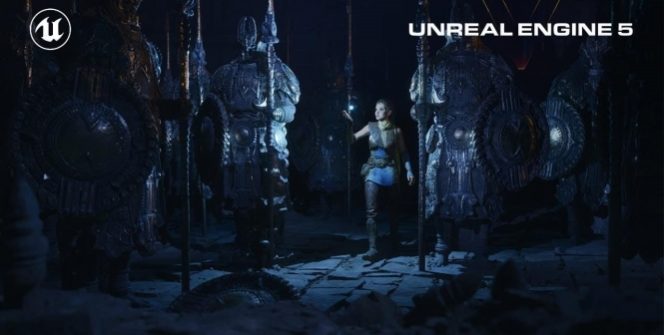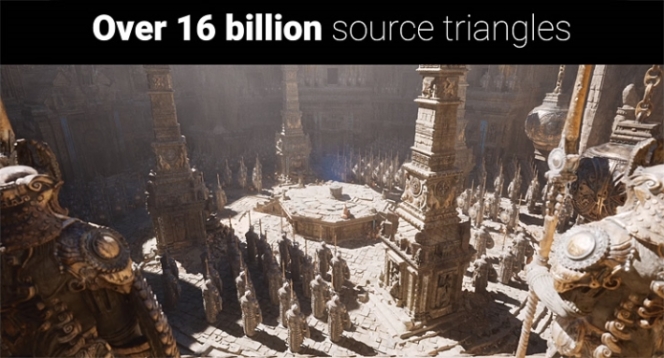Unreal 5‘s capabilities on PS5 will be quite astounding: it will be able to display up to one million objects with a high polygon number at 60 FPS!
Last month, we already got a taste of Epic Games about what to expect in the next generation. The “Lumen in the Land of Nanite” real-time demo promised an amazing, photo-realistic image for the PlayStation 5. We’ve heard a lot of exciting rumors about UE5 since then, but now Epic itself has presented a detailed analysis of the capabilities of their next game engine. The 45-minute video presented at the Unreal Fest 2020 virtual event is worth a look:
Tim Sweeney said that the serious negotiations only took place with Sony after the introduction of the UE5 Demo…
The most exciting element of the new engine is Nanite, the new “virtualized micropolygon geometry” system that allows you to import photo-quality elements and models into the game in virtually real time. Here’s how Epic’s engineering director describes this new method:
„Nanite is a next-generation geometry engine that empowers artists to deliver their vision in a way not possible before in a game engine. Nanite allows direct import of cinematic-quality assets that have micro-polygon-level detail […] you can now target assets that have one triangle per pixel. In addition, Nanite supports very large object counts with automatic streaming to keep everything in budget.”
The “Lumen in the Land of Nanite” demo ran at approximately 1440p at 30 FPS, but the PS5 seems to easily render the same at 60 FPS. We already know that Nanite doesn’t have much machine requirements for the GPU: the demo ate only 768MB of RAM. Still, during the demo, an incredible amount of polygons were put on the picture, each statue we saw consisted of 33 million polygons! And what we thought was a texture was actually 3D geometry built from tiny, pixel-sized polygons.
The statues in the picture below alone filled the room with a total of 16 billion polygons!
So what about the scene of the girl crossing the valley? There, nearly 500,000 objects with a super high polygon count were visible, of which 1 million, according to Epic, could easily be rendered on the new generation of hardware.
After Sony bought itself into Epic Games for $ 250 million, the two companies said they would work more closely together in the future…
This is all impressive, but there are still limitations to Nanite. Epic has acknowledged that the engine is not particularly good at rendering translucent or non-rigid materials such as grass or hair. So it’s no coincidence that the demo took place in a rocky-desert area. Still, it’s reassuring that developers can combine Nanite with older Unreal Engine technologies at any time.
Epic even talked about its new lighting solution, the Lumen. The new tech will support detailed real-time lighting, but will not yet work with reflective surfaces. (In other words, it won’t be a challenge for ray tracing for a while.) The other downside to the new lighting system is the system requirements: it wasn’t Nanite technology that held back the UE5 demo, but Lumen, which led it to run at only 30 FPS. Epic is optimistic: they hope they can move this number up to 60 FPS on next-gen.
The Sony PlayStation 5 and Microsoft Xbox Series X consoles will arrive later this year, launching the next generation. We are looking forward to it. And you?
Source: WCCFTech
Please support our page theGeek.games on Patreon, so we can continue to write you the latest gaming, movie and tech news and reviews as an independent magazine.
Become a Patron!








![[TGA 2025] Diablo IV: Lord of Hatred: A Character Class Returns! [VIDEO]](https://thegeek.games/wp-content/uploads/2025/12/theGeek-diablo-4-expansion-2-lord-of-hatred-paladin-skovos-horadric-cube-302x180.jpg)








Leave a Reply